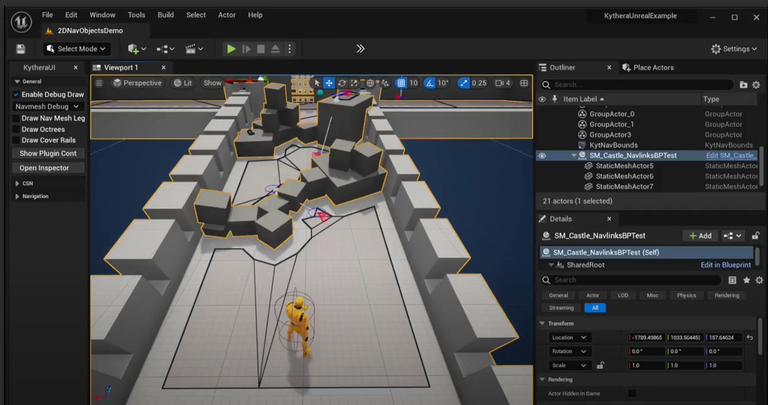In the fast-paced world of game development, ensuring your title runs smoothly without bugs is crucial for delivering immersive game experiences. Automated game testing with AI streamlines this process, allowing developers to catch issues early and focus on creative elements like AI-driven game design. Whether you're integrating machine learning in Unity/Unreal or exploring the future of game development, setting up these pipelines can transform your workflow. This guide walks you through the essentials, incorporating Game dev with AI practices to boost efficiency.

Why Automated Game Testing with AI Matters in Game Dev with AI
Traditional testing methods often fall short in handling the complexity of modern games, where elements like Procedural Content Generation (PCG) and emergent gameplay create unpredictable scenarios. Automated game testing with AI addresses this by using intelligent algorithms to simulate player behaviors, test pathfinding algorithms (A*), and evaluate NPC decision-making. For instance, tools powered by Reinforcement Learning (RL) for NPC can mimic real-world interactions, enhancing NPC believability and adaptive game difficulty.
In Game dev with AI, this approach not only reduces manual effort but also supports ethical AI in gaming by identifying biases in social simulation in games or in-game social AI. According to recent surveys, 84% of gaming executives are using or testing AI tools, with significant adoption in content generation and player engagement. Another study shows that 46% of developers have improved character animations through AI, highlighting its role in expressive character AI and player-NPC interaction.
Steps to Set Up Automated Game Testing Pipelines with AI in Game Dev with AI
Setting up an automated pipeline involves integrating AI game engine tools with your development environment. Here's a step-by-step guide tailored for Game dev with AI enthusiasts.
Step 1: Choose Your Tools and Frameworks
Start with AI co-design tools compatible with visual programming for game logic (e.g., Unreal's Blueprint, Unity's Bolt). Popular frameworks include GameDriver for Unity/Unreal automation, Test.ai for AI-driven bug detection, and Appsurify for risk-based testing. These support machine learning game design by testing Behavioral trees and environment generation.
Step 2: Configure the Pipeline Environment
Use CI/CD tools like Azure DevOps or Jenkins to build your pipeline. Integrate AI elements such as Intelligent Virtual Agents (IVAs) to simulate player actions. For rapid game prototyping, incorporate scripts that test game logic automation and game development for non-programmers. Now days gamers are using no-code game development platforms. Gamers can explore these platforms to build games with no programming experience.
Run initial setups to ensure compatibility with machine learning in Unity/Unreal, focusing on pathfinding algorithms (A*) and sensor-driven NPC AI.

Step 3: Implement AI-Driven Tests
Develop tests using Reinforcement Learning (RL) for NPC to evaluate NPC believability and dynamic NPC dialogue. Leverage Utility-Based AI for prioritizing test cases and Finite State Machines (FSMs) for state transitions. This step ensures coverage of emergent gameplay and adaptive game difficulty.
Tools like PlaytestCloud use ML for player feedback, while DeepMotion enhances animations. Test for in-game social AI and ambient NPC behavior to create more immersive experiences.
Step 4: Analyze and Iterate
Monitor results with real-time reporting, identifying issues in social simulation in games or expressive character AI. AI can predict bugs, saving time—studies show it boosts efficiency by automating tasks across devices.
Challenges and Best Practices in Automated Game Testing with AI
While powerful, automated game testing with AI isn't without hurdles. Over-reliance might miss nuanced player-NPC interaction, and ethical AI in gaming requires addressing biases in Generative AI for characters.
Best practices include combining AI with manual testing for comprehensive coverage and using Large Language Models (LLMs) in games for natural language processing in tests. Always prioritize data privacy in social simulation scenarios.
68% of studios implement AI for testing and engagement.
- AI reduces testing time by up to 70% in some cases.

The Future of Automated Game Testing with AI in Game Dev with AI
Looking ahead, the future of game development lies in AI-driven innovations that enhance immersive game experiences. Expect greater integration of Procedural Content Generation (PCG) with testing pipelines, enabling dynamic environments and emergent gameplay.
By following this guide, you'll be well-equipped to implement automated game testing with AI, elevating your Game dev with AI projects to new heights.
Hello.
It appears that significant parts of this writing are machine-generated.
We would appreciate it if you could avoid publishing AI-generated content (full or partial texts, art, etc.).
Thank you.
Guide: AI-Generated Content = Not Original Content
Hive Guide: Hive 101
If you believe this comment is in error, please contact us in #appeals in Discord